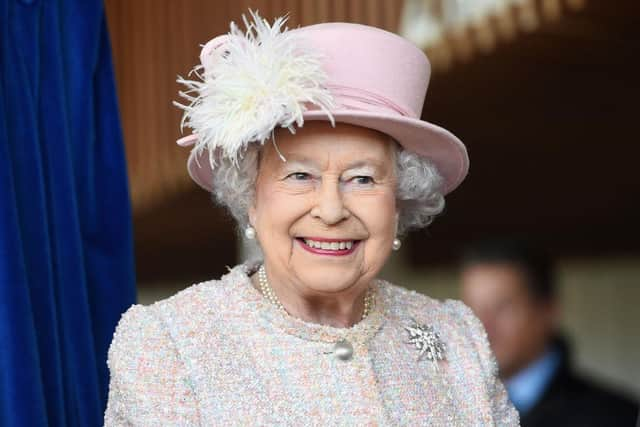What are Operation Unicorn, Operation London Bridge and Operation Spring Tide? The secret plan outlining what would happen if the Queen dies in Scotland - and what happens next
This has meant those tasked with planning for what will happen in the days following the monarch’s death have drawn up details for the eventuality that it happens in Scotland.
It would set in motion a series of events, leading to her funeral and the crowning of a new king.
Here’s what we know about what would happen.
What is Operation Unicorn?
Advertisement
Hide AdAdvertisement
Hide AdOperation Unicorn is the secret plan laying out what would happen if the Queen dies in Scotland.
It states that on hearing the news, parliamentary business would immediately be suspended to allow authorities to prepare for the Queen’s state funeral.


It is expected hundreds of thousands of people would make their way to Scotland to pay their respects. People would be encouraged to gather around the Scottish Parliament, the Palace of Holyrood House and St Giles’ Cathedral – all on Edinburgh’s Royal Mile.
The Monarch will be conveyed from Aberdeen to Edinburgh on a special train, with members of the Armed Forces and the emergency services lining every platform on the way.
As the train will be travelling well below normal speed, security will be ultra-tight with air, land and sea covered by the military. Temporary fire and police stations will be set up at the Palace of Holyroodhouse with a strong armed police presence, backed by the military.
After arrival in Edinburgh, the Queen’s body would initially rest in state at the Palace of Holyroodhouse, before her coffin is carried to St Giles’ Cathedral.
At the cathedral, Scotland’s senior civic leaders, dignitaries and members of the public will have the opportunity to pay their respects and sign a book of condolence.
The Queen’s coffin would then be placed on a Royal Train at Waverley Station before travelling down the East Coast Mainline to London. Operation Unicorn ends when her Majesty leaves Scotland for the last time, again with an honour guard formed on every platform from Edinburgh southward.
Advertisement
Hide AdAdvertisement
Hide AdThere are two meetings each year to discuss and update the plans, with changes being made in line with the latest health updates from Buckingham Palace.
How do we know about Operation Unicorn?
The minutes from a meeting of the Scottish Government’s Leadership Group (LG) were accidentally leaked in June 2019 on a forum for Holyrood staff.
The minutes stated: “LG received an update on planning for Operation Unicorn – the death of Her Majesty The Queen while in Scotland.
“The primary focus was on the impacts on staffing and the specific impacts depending on timing.”
Operation Unicorn was also mentioned in the Parliament's online papers in 2017, when the Leadership Group agreed to set up a "resilience board for disruptive incidents".
What is Operation London Bridge?
Operation London Bridge is the main plan for the Queen’s death, which would run in parallel with Operation Unicorn should the monarch die north of the border.
Long shrouded in mystery, it sets out in detail what will happen in the ten days between the Queen’s death and her state funeral.
They were leaked last year to politics website Politico and cover everything from how the news will be broken to social media etiquette.
What are the details of Operation London Bridge?
Advertisement
Hide AdAdvertisement
Hide AdThe operation states that in the hours after the tragic news, known as ‘D-Day’, there will be a “call cascade” to inform the Prime Minister, senior civil servants and the heads of Commonwealth countries, using the code phrase “London Bridge is down”, while the royal household will issue an official notification to the public. Flags at Whitehall will be flying at half-mast within ten minutes and the Queen’s successor, Prince Charles, is expected to address the nation the next day.
Books of condolence will be opened around the country, gun salutes will take place at saluting stations and a service of remembrance will be held at St Paul's Cathedral.
Different arrangements are in place depending on where the Queen passes, but ultimately her coffin will be taken to the the Throne Room at Buckingham Palace.
Five days after the Queen's death, the coffin will be moved to Westminster Hall and, after a service, lie in state for three days.
The state funeral will be held at Westminster Abbey ten days after the Queen's death, after which her body would be buried in a prepared tomb at King George VI Memorial Chapel in St George's Chapel, Windsor Castle, alongside Prince Philip, Duke of Edinburgh.
The day of the funeral will be declared a Day of National Mourning, although not an official bank holiday, and a period of two minutes' silence will take place across the UK at midday.
What is Operation Spring Tide?
Operation Spring Tide is the plan for the Prince of Wales' ascension to the throne, starting the day after the Queen’s death when he will be proclaimed the new king by the Accession Council at St James's Palace.
That evening MPs would swear allegiance to the new monarch, followed by proclamations by the Scottish, Welsh and Northern Irish administrations the day after.
Advertisement
Hide AdAdvertisement
Hide AdOn the third day the new monarch would receive the motion of condolence at Westminster Hall in the morning and then depart for a tour of the United Kingdom, attending services in Edinburgh, Belfast and Cardiff before returning to London for his mother’s funeral.
Read more:
Comments
Want to join the conversation? Please or to comment on this article.
